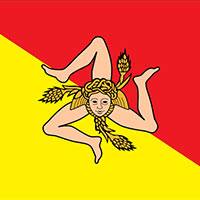Arabs in Sicily - Islamic influence on Sicilian Life and Art
The period of Islamic rule in Sicily is marked by a scarcity of material evidence. Architectural remnants from this period are predominantly limited to masonry fragments of mosques and fortifications, which have often been integrated into subsequent constructions.
Arab-Norman bronze items
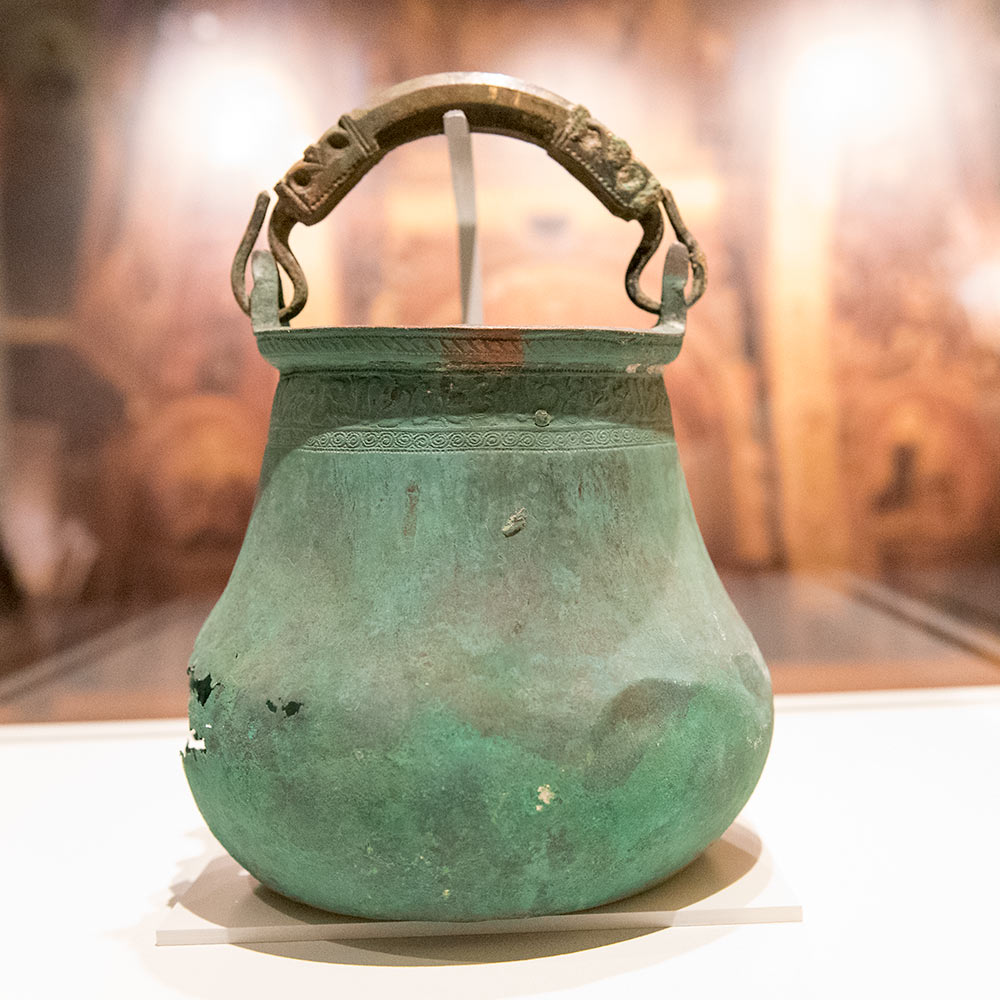
Arab-Norman bronze pail (c. 1100-1200) from the Contrada Bambina shipwreck near Marsala. Beneath the rim, a punched inscription from the Qur'an in early Arabic characters. This pail was part of the exhibition Storms, War and Shipwrecks: Treasures from the Sicilian Seas (Ashmolean Museum, Oxford, 21 Jun 2016 to 25 Sep 2016), but is owned by Museo archeologico regionale Lilibeo-Baglio Anselmi, Marsala.
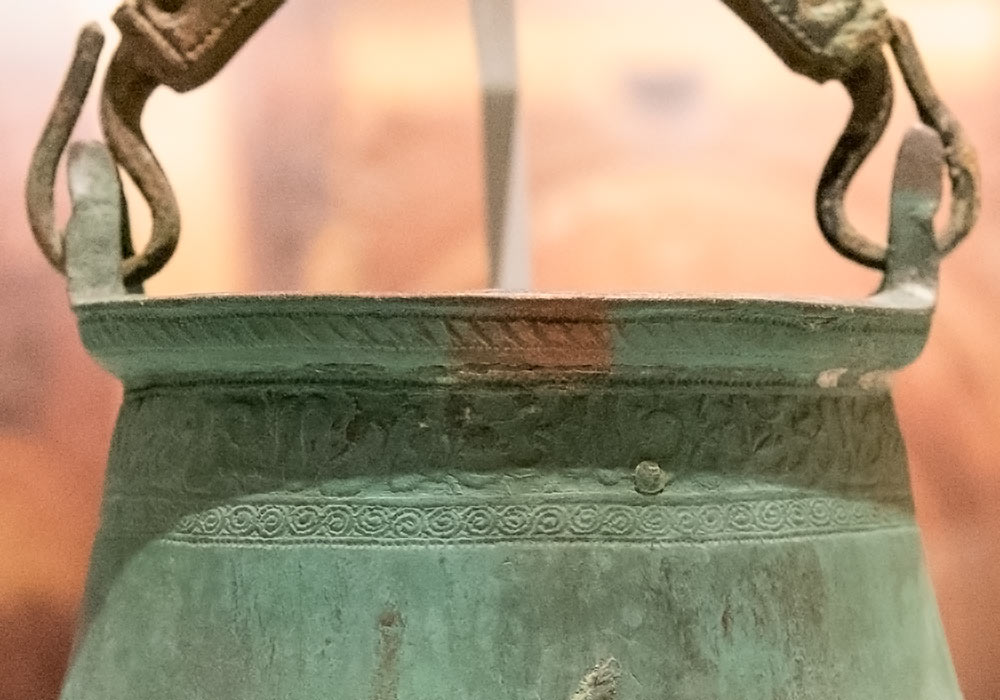
Detail of Arab-Norman bronze pail (c. 1100-1200) from the Contrada Bambina shipwreck near Marsala. Beneath the rim, a punched inscription from the Qur'an in early Arabic characters. (Museo archeologico regionale Lilibeo-Baglio Anselmi, Marsala.)
Muqarnas
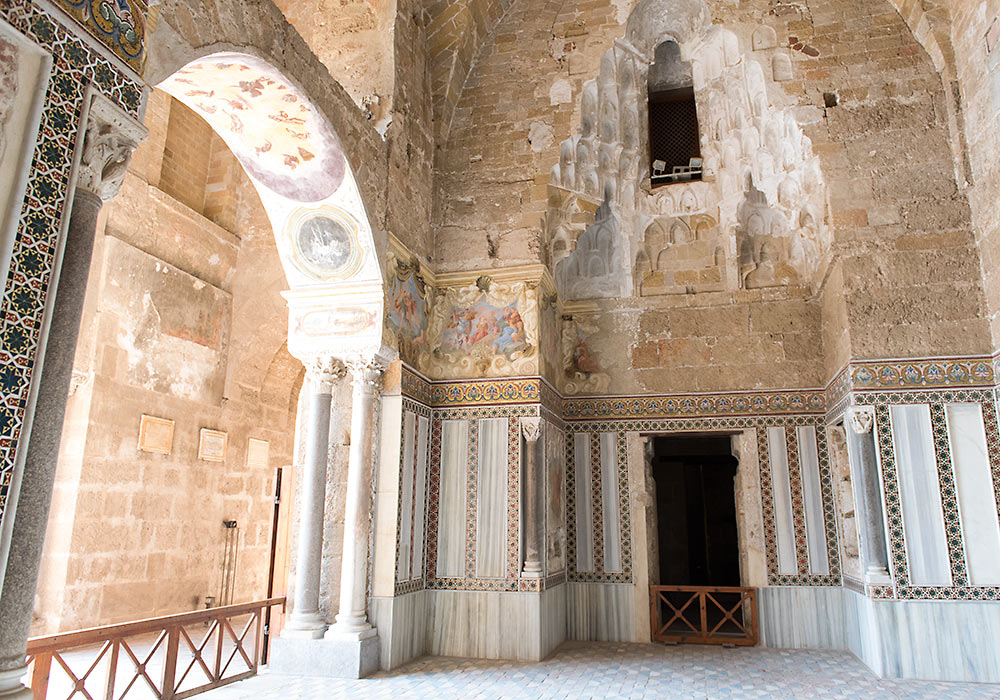
Muqarnas is a very common element of Islamic Architecture. It is a form of ornamented vaulting, the geometric subdivision of a squinch, or cupola, or corbel, into a large number of miniature squinches, producing a sort of cellular structure, sometimes also called a “honeycomb” vault.
Muqarnas developed around the middle of the 10th century in northeastern Iran and almost simultaneously — but apparently independently — in North Africa. Examples can be found across Morocco and by extension, the Alhambra in Granada, Spain, the Abbasid Palace in Baghdad, Iraq, and the mausoleum of Sultan Qaitbay, Cairo, Egypt.
Large rectangular roofs in wood with muqarnas-style decoration adorn the 12th century Cappella Palatina in Palermo, Sicily, and other important buildings in Norman Sicily.
Muqarnas may be made of brick, stone, stucco, or wood, and clad with tiles or plaster. The individual cells may be called alveoles.
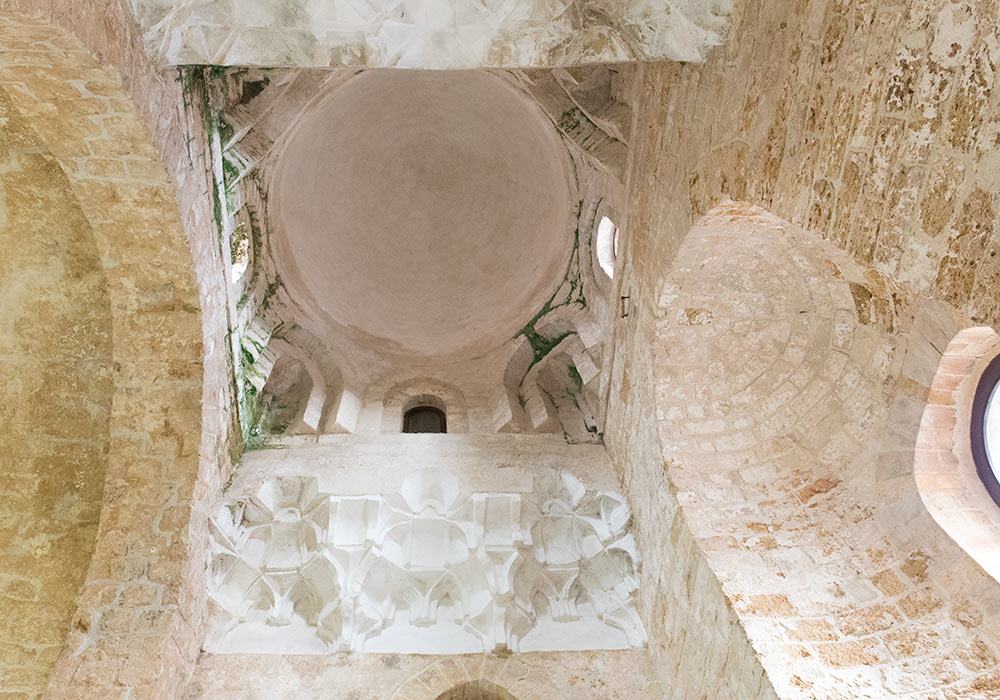
The muqarnas in the ceiling structure of the Norman Chiesa della Santissima Trinità alla Zisa (aka Cappella palatina della Zisa) - the little chapel next to la Zisa.
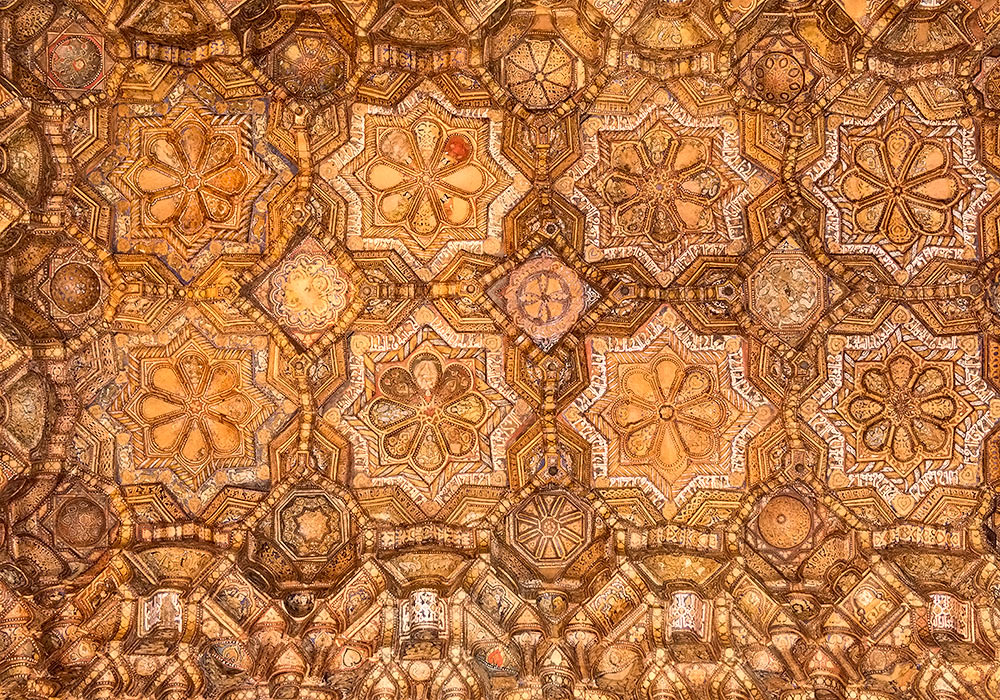
The spectacular wooden muqarnas in the ceiling at Cappella Palatina.
General information about Islamic Conquests and Civil War
Excerpts from the lecture series "The Early Middle Ages, 284-1000" by professor Paul Freedman, Yale University
See also: Conquest and Conversion in Medieval Muslim Sicily September 28, 2017 A talk by Alex Metcalfe, Senior Lecturer, Department of History, Lancaster University, UK.
La Cuba
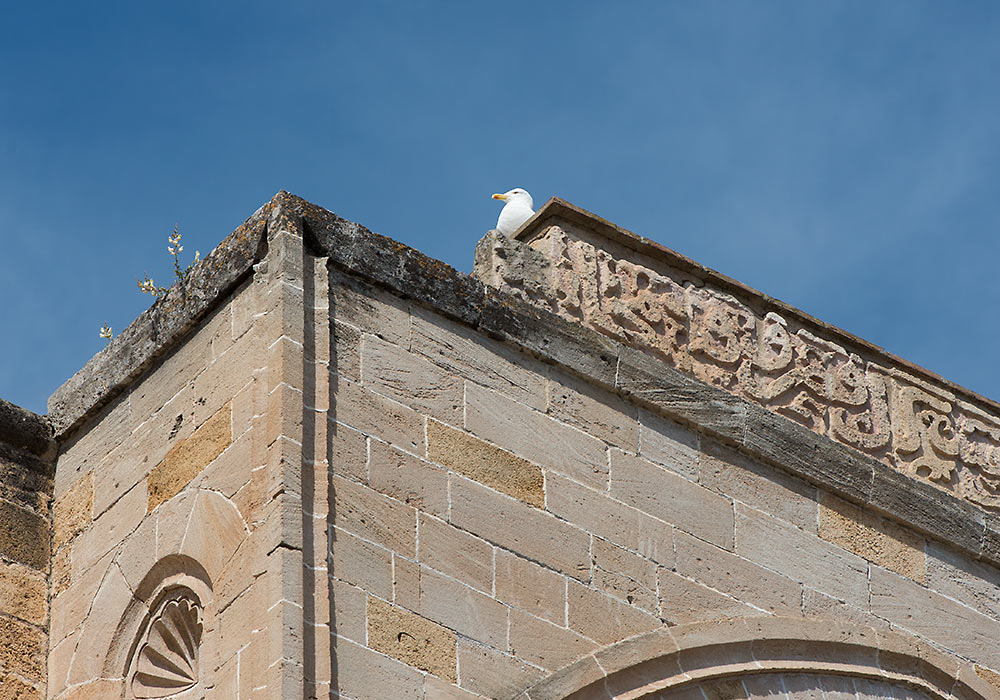
Gull on top of the Norman Palace La Cuba. Arabic inscription at the top of the outer wall. La Cuba was built by William II in 1180, and is an imitation of the Zisa palace.
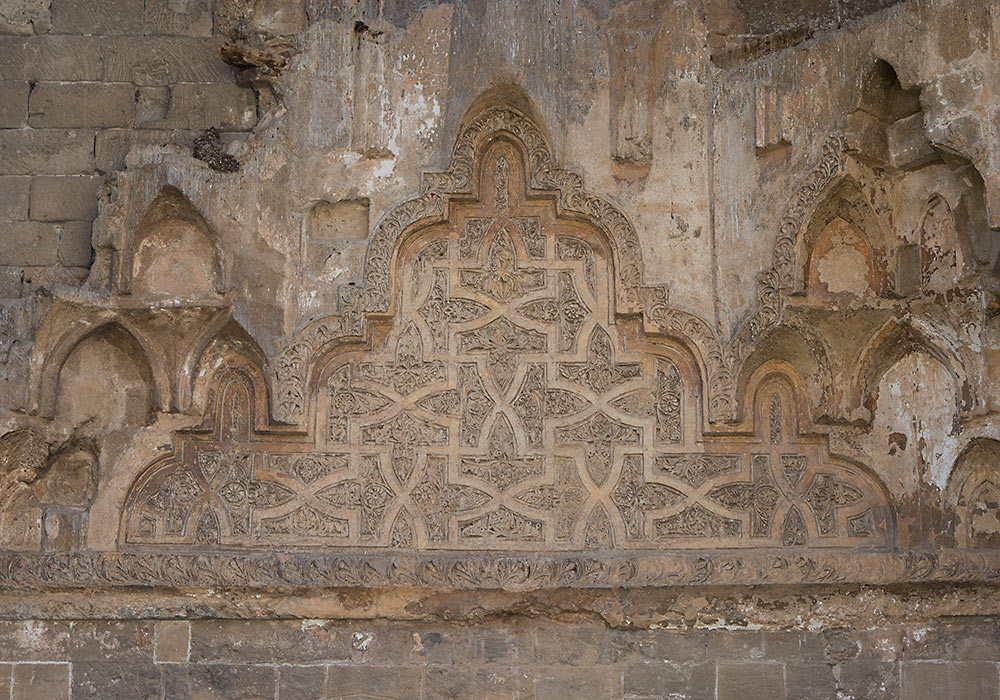
The remains of a hall with stalactite vaults and reliefs at La Cuba.
La Martorana
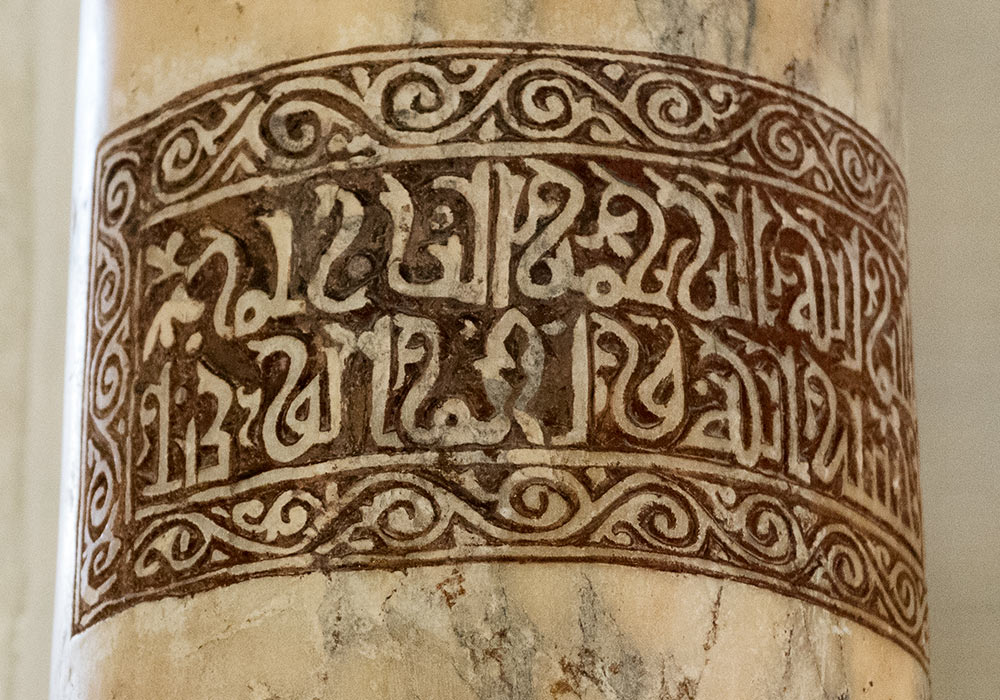
Islamic inscription on a column in La Martorana (Santa Maria dell'Ammiraglio), Palermo.
The inscription (in Kufic, the oldest calligraphic form of the various Arabic scripts) reads:
In the name of God, the Merciful, the Compassionate, ("Basmala" - all prayers and chapters in the Quran starts with these words)
God is sufficient for me and He is the best advocate
Information about the columns in Santa Maria based on a passage in Jeremy Johns' article "The Arabic inscriptions of the Norman kings of Sicily: a reinterpretation" (link). Transcript errors are all mine since the Arabic letters (and transcript of them) are not available to me. Please check the original article for correct quotations:
Jeremy Johns states that these columns in all probability were originally employed in the porticoes of the forecourt, flanking the western entrance, and corresponding to the two dedicatory mosaic panels within. That which alludes to George bears two bands of inscription: the collar beneath the capital reads “Truly, God is with those who fear Him”, Qur'an 6: 128; and a panel in the middle of the shaft is inscribed with the hasbala, the motto introduced as an apprecatio in the Arabic documents of the royal diwan under the viziership of George of Antioch – “In the name of God, the Merciful, the Compassionate, God is sufficient for me and He is the best advocate”.
The explicitly Islamic tenor of these inscriptions suggest that this column was probably spolium from a religious building, and was reused in Santa Maria because of the close association between the hasbala and the vizier George. The second column is inscribed with four ad'iya (sorry, the correct letters not available) from the standard royal repertoire used by king Roger, and was presumably carved ex novo to provide a counterpart to the first inscribed column. Based on Jeremy Johns' article "The Arabic inscriptions of the Norman kings of Sicily: a reinterpretation". I am responsible for all errors.
The Basmala
The Basmala (Arabic: بسملة basmala), also known by its incipit Bismillah (Arabic: بسم الله, "In the name of God") is the name of the Islamic phrase "In the name of God, the Most Gracious, the Most Merciful". This is the phrase recited before each sura (chapter) of the Qur'an – except for the ninth. It is used by Muslims in various contexts (for instance, during daily prayer) and is usually the first phrase in the preambles to the constitutions of Islamic countries. (Wikipedia)
The Arabic Language
Sicily in the Middle Ages and later periods, was characterized by a complex linguistic coexistence, where Arabic, Greek, and Latin dominated in different periods and domains. Sicilian-Arabic had a profound influence on the Sicilian dialect, and traces of this influence can still be found in modern Sicilian vocabulary.
Linguistic Diversity in Sicily During the Middle Ages and Early Modern Period
-
Arabic
-
After the Muslim conquest of Sicily (827–1091), Arabic became the dominant language in administration, literature, and daily life among the Arab and Berber populations, as well as parts of the native Sicilian population.
-
Quranic Arabic was used in religious contexts, while a Sicilian-Arabic dialect developed in everyday life.
-
-
Greek
-
Byzantine Greek was an important language in Sicily before the Arab conquest and continued to be used, particularly in religious contexts and among Greek-speaking Christians, even after the Norman reconquest in the 11th century.
-
Greek was also an administrative language during the early Norman period, as many bureaucratic and ecclesiastical documents were still written in Greek.
-
-
Latin
-
Following the Norman reconquest (1061–1091), Latin gained prominence as an administrative language, particularly under Roger II (r. 1130–1154) and the Kingdom of Sicily.
-
Latin was also the language of church liturgy and was used in legal and diplomatic documents.
-
-
Sicilian-Arabic and Its Legacy
-
Even after the Norman reconquest, elements of Sicilian-Arabic survived in the local vernacular, especially in loanwords related to agriculture, trade, and daily life.
-
The Sicilian dialect continued to evolve with Arabic, Greek, and Latin influences.
-
-
Norman French and Italian Variants
- The Normans, originally from France, brought Norman French, which gained some influence at court and among the aristocracy.
- Over time, Sicilian, as a Romance vernacular, became more prominent in literature and administration, especially under the Kingdom of Sicily and the Hohenstaufen dynasty (12th and 13th centuries).
For more, please see Roberto Sottile: Il «Siculo Arabic» e gli arabismi medievali e moderni in Sicilia and the work of Dr. Alex Metcalf.
The Duomo in Palermo
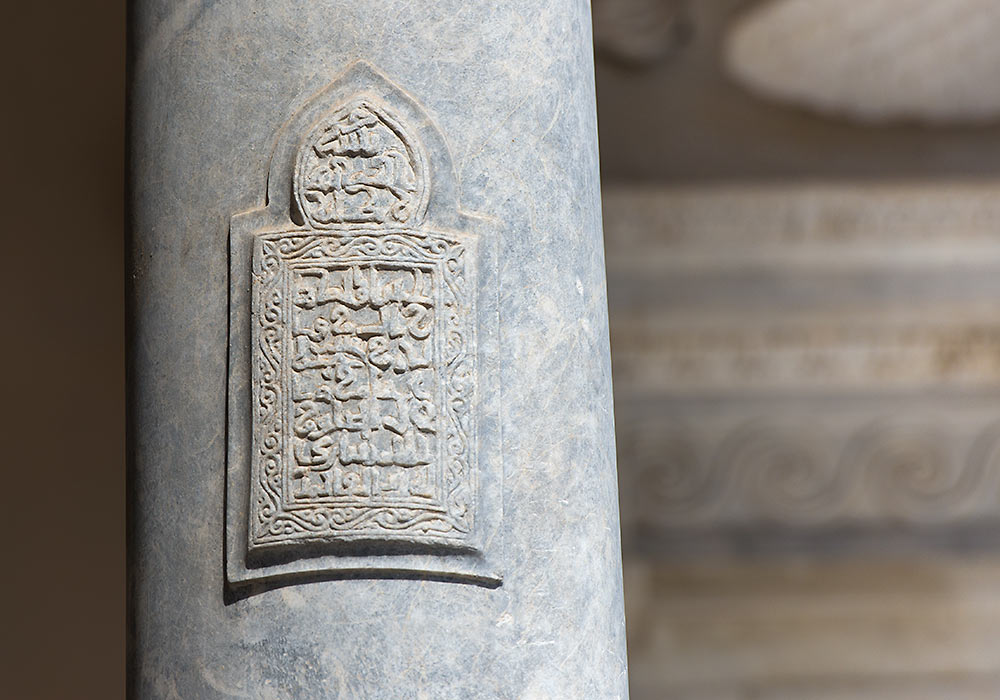
Islamic inscription on the left column outside the cathedral of Palermo may have been preserved from the earlier mosque. The passage is from the Koran.
La Magione
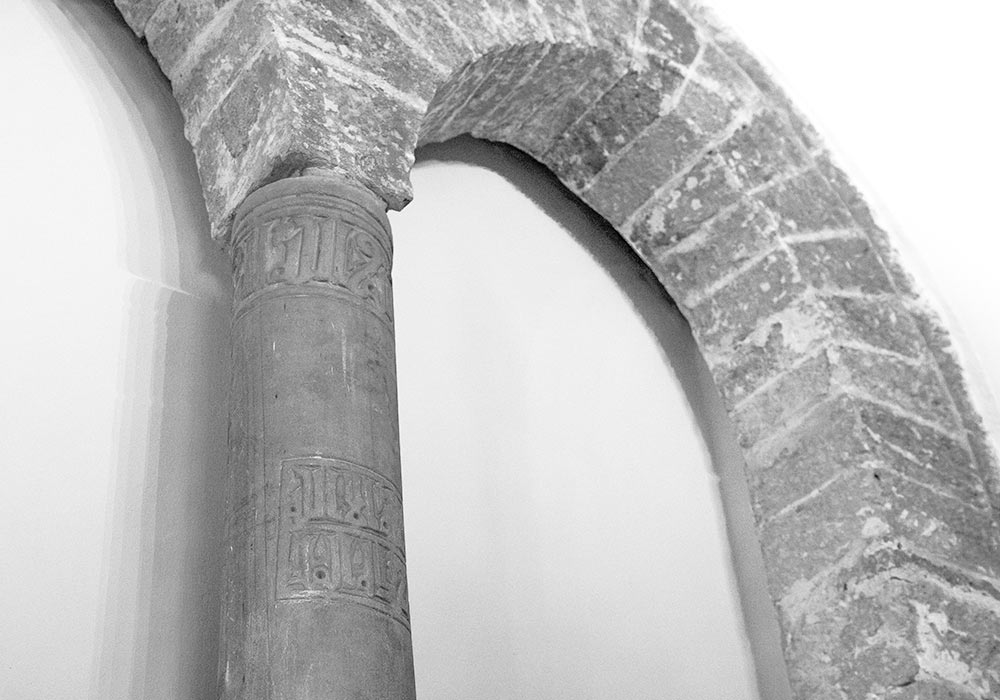
Islamic inscription in La Magione, Palermo.
The remains of the mosque at Segesta (AD 12th century)
Source: Pier Paolo Racioppi "Mosque" in Discover Islamic Art, Museum With No Frontiers
The remains of a mosque are located in the immediate vicinity of the ancient theatre of Segesta, outside the fortified area of the late medieval settlement. It is laid out over an irregular rectangle 20.5 m long and 11.4 m wide, and was constructed in a single phase using a uniform building technique (limestone blocks bound with mud). The floor is bare rock. The mihrab niche on the south side, correctly oriented to within a few degrees of southeast, is 2 m wide on the inside and 1.5 m deep. It is rectangular on the outside and protrudes from the wall by about a metre. There are no traces of a minbar.
It was probably a rural mosque from Norman times, which was built, along with the fortified settlement, on high ground by an Islamicised people fleeing the lands gradually being conquered by the Normans.
It is not clear whether it served just the village or the entire surrounding area. An Islamic necropolis has been discovered nearby. The mosque was dated from the discovery during excavations of ceramic remains dating back to the 12th century.
Source: Pier Paolo Racioppi "Mosque" in Discover Islamic Art, Museum With No Frontiers, 2016. Link
Castello di Poggiodiana
In this video Jean Paul Barreaud examines Castello Poggiodiana, a military castle built on a well by the pre-Norman Muslims of Sicily. It is situated outside Ribera between Sciacca and Agrigento. Roger I later gave it to his daughter.
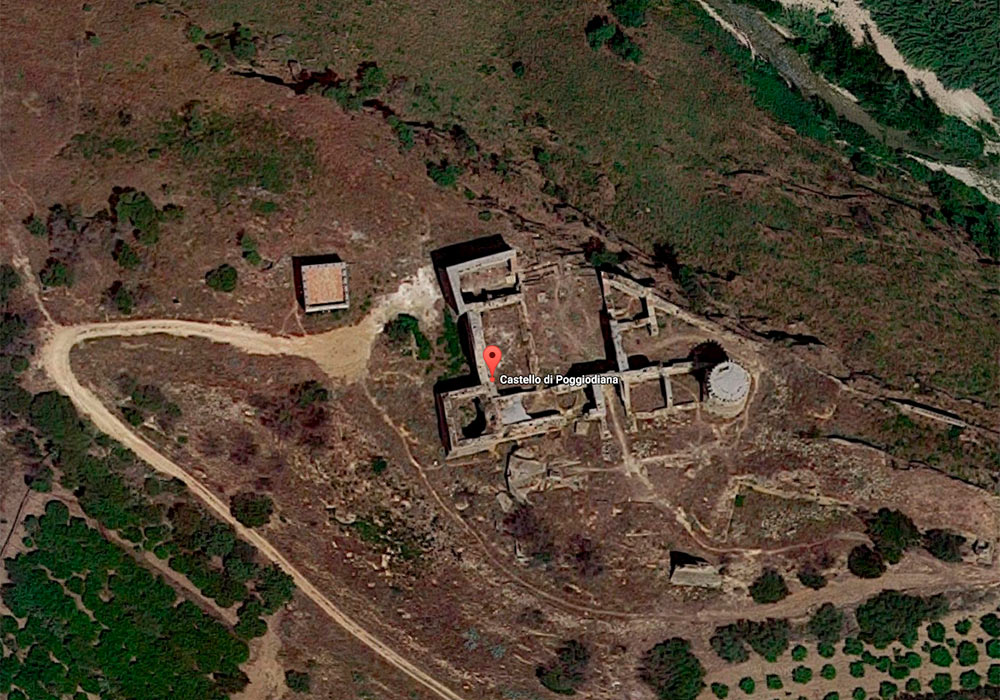
Castello di Poggiodiana (Google Satellite View).
View the castle and its surroundings on Google Earth (requires Chrome).
Arabic in Sicilian Geographical Names
- Caltagirone derives from the Arabic "qal'at-al-jarar" ("Castle of [pottery] jars"). Caltagirone is famous for its pottery production. The city was almost completely destroyed by the earthquake of 1693.
- 'Gibilmanna' derives from Arabic 'gebel' (mountain) and 'manna' (edible substance extracted from the manna ash trees).
- Misilmeri (Menzel al Emir). Sicilian: Musulumeli.
- Alcamo: manzil al-qamah, perhaps meaning the ‘farm of bitter cucumbers’.
Qanat
During the Arab period (827–1072) in Sicily, Palermo was equipped with a huge water supply system (qanat/kanat).
Kanats of Sicily: Read more on Bestofsicily.com
The Saracen Castle in Taormina
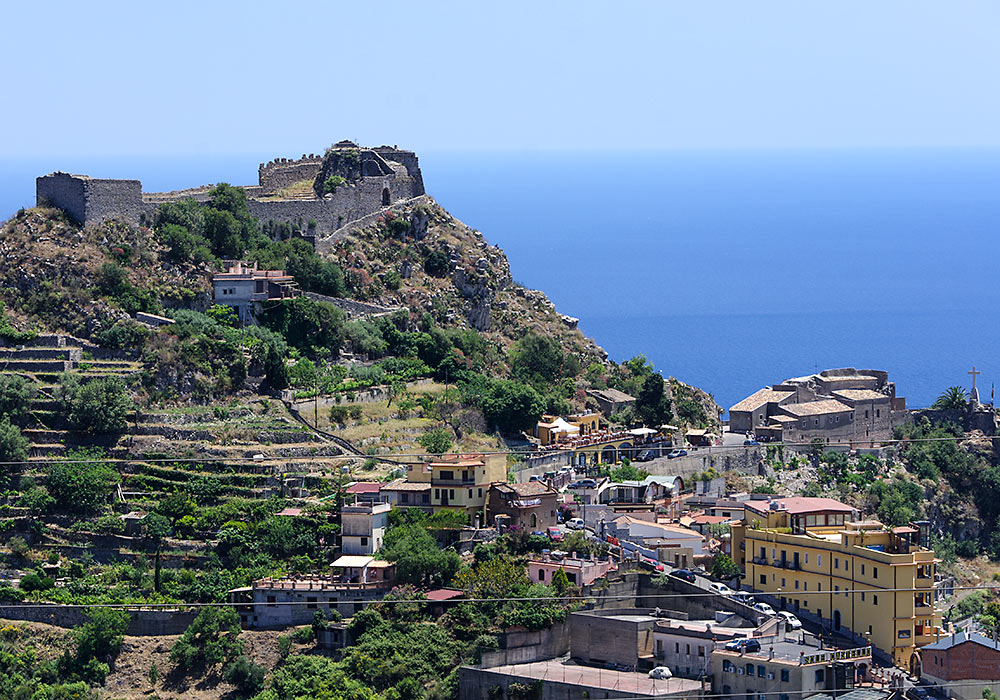
The Saracen castle seen from the way down from Castelmola to Taormina. The Saracens (Muslims) lost Taormina to the Normans in 1079. About 80 percent of the population in Sicily were Muslims, so relative religious harmony was essential for the Normans. Roger I's concern for the Muslims was not simply a matter of policy, Gordon S. Brown argues, "but also one of respect. He found that he had assumed rule of a state with a rich and inventive culture and tradition, one that could, in the proper circumstances, flourish side by side with Latin and even Greek traditions to the mutual benefit of all."
Ibn Hamadis (c. 1090): Poem about the Norman invasion and ousting of the Arabs from Sicily
As the wolves run through the forests
so do the invaders demolish
what they find on our island
… Oh sea, why do you separate me from my homeland
… If I could only sail back to my beloved Sicily …
Ibn Hamdis (c. 1056 – c. 1133) was a Sicilian Arab poet, born in Noto, Sicily.
The Lavatoio, Cefalù
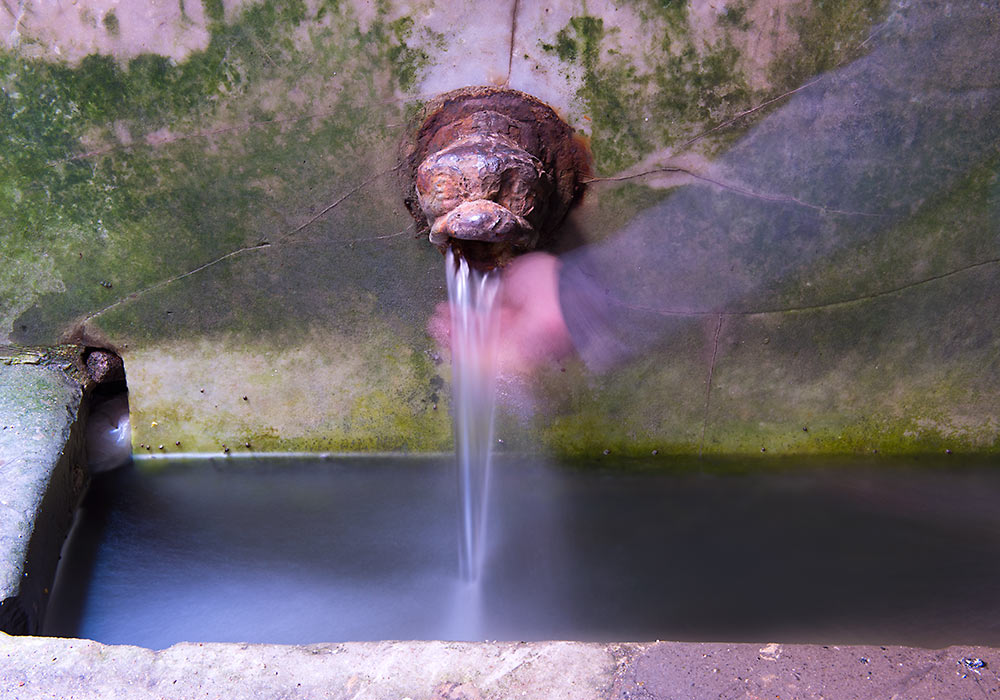
The Lavatoio is a picturesque medieval wash-house made during the Arab occupation of Sicily (827-1090).
Photo: Per-Erik Skramstad / Wonders of Sicily (ISO 100, f16, 30sec)
Arabic letters in Tommaso Fazello's Sicilian History (De Rebus Siculis Decades Duae, 1558)
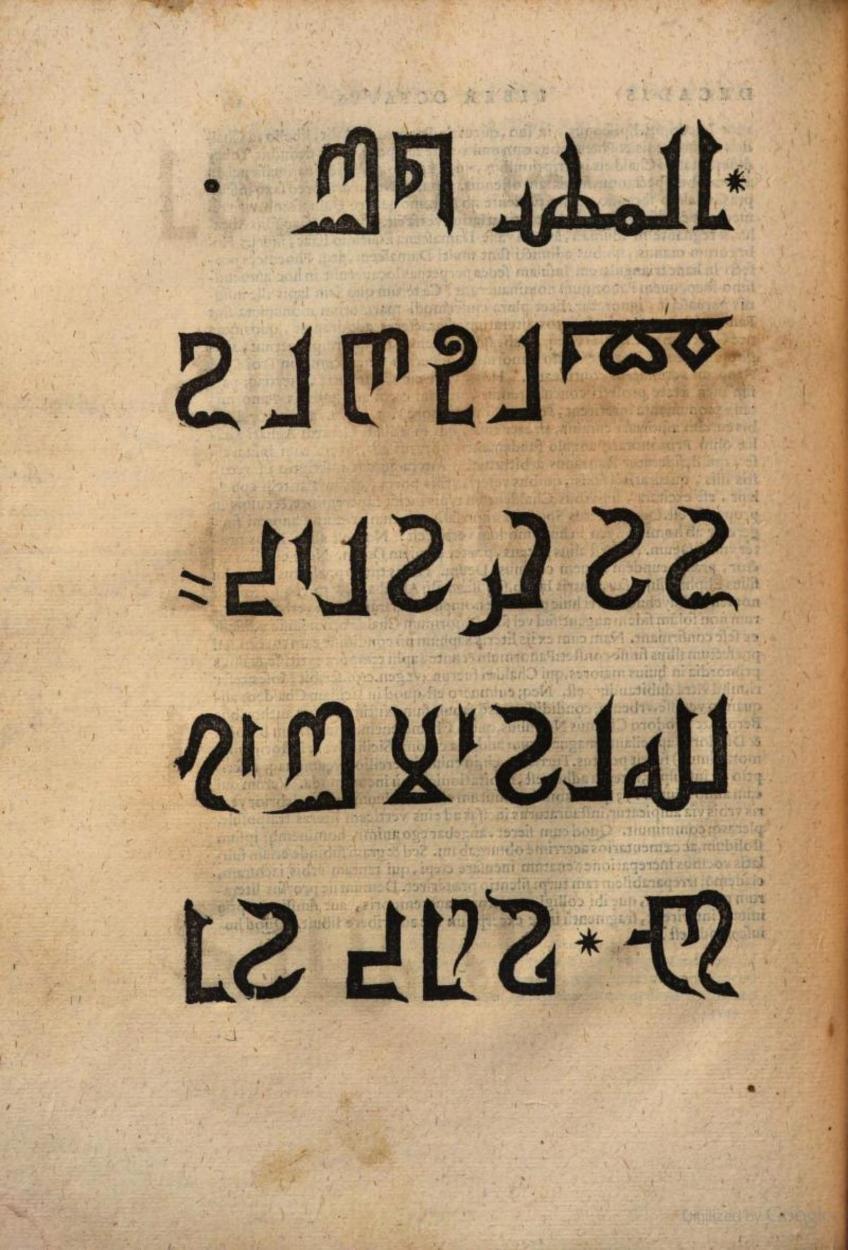
Arabic letters in Tommaso Fazello's History of Sicily De rebus Siculis decades duae (Palermo, 1558).
Publisher of the first edition: Giovanni Matteo Mayda & Giovanni Francesco Carrara (Palermo)
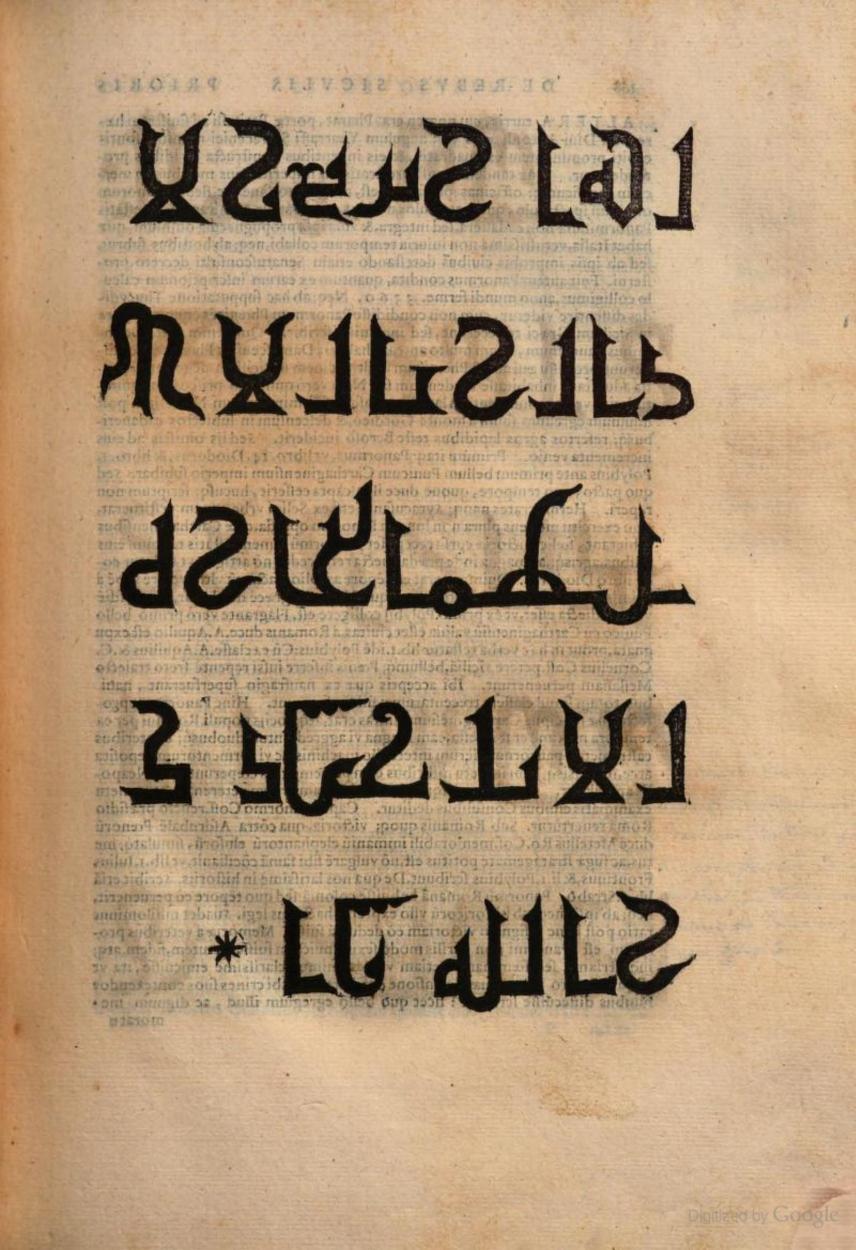
Arabic letters in Tommaso Fazello's History of Sicily De rebus Siculis decades duae (Palermo, 1558)
The Normans in South Italy
999–1017 Arrival of the Normans in Italy
1009–1022 Lombard revolt
1022–1046 Mercenary service
1046–1059 County of Melfi
1049–1098 County of Aversa
1053–1105 Conquest of the Abruzzo
1061–1091 Conquest of Sicily
1073–1077 Conquest of Amalfi and Salerno
1059–1085 Byzantine-Norman wars
1077–1139 Conquest of Naples
1091: The county of Ragusa was founded in 1091 by Count Roger for his son, Godfrey.
1095: 22 December Roger II is born
1105: Roger II is named Count of Sicily
1127: Roger II becomes Duke of Apulia and Calabria
1130: Roger II becomes King of Sicily
1130s Cappella Palatina: Commenced by Roger II
1131 Building of the cathedral in Cefalù begins (Roger II)
1140 Cappella Palatina is consecrated.
c1140-c1147 The painted wooded ceiling in Cappella Palatina was completed
1143–1151 The mosaics in La Martorana (Santa Maria dell'Ammiraglio) was made
1154: 26 February Roger II dies and William I becomes King of Sicily
1154-1166: The mosaics of the central nave of the Cefalù Cathedral and the nave and aisles of the Palatine Chapel (Cappella Palatina) were most likely made during the rule of William I
1160-70 c. Sala di Ruggero (King Roger's Room) in the Norman Palace is made
1166: 7 May King William I dies in Palermo
1174–1189 The cathedral in Monreale is built (King William II)
1194 Sicily falls into the hands of the Germanic Hohenstaufen dynasty

